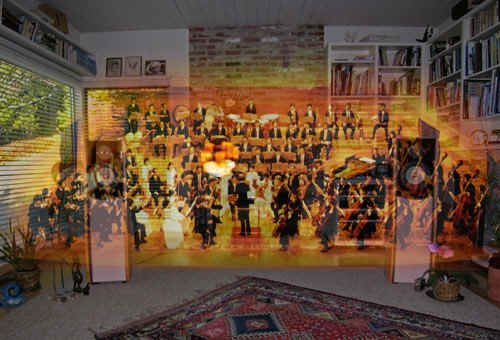Two DIAMETRICALLY-OPPOSED technologies are horn drivers and planar speakers; the first: extremely efficient and capable of extremely LOUD performance with very low power (but with poor imaging) and the second: low efficiency and CAN'T GET LOUD EVEN WITH A HOOVER-DAM-SIZED-AMP DRIVING THEM, but with amazing detail and soundstage! Yes: from the photo you can guess that I'm normally on the Magnepan forum - I just popped over here when I saw horns were being discussed...
You see, my dearly-departed dad had a Klipschorn (mono) in the early 60's (and kept until the mid-70's) and I grew up thinking the "boom and shriek" were how speakers sounded (don't hate me: the early K-horn - or at least his - was atrocious!) But, in the days of a "few watts/channel amplifiers", I blew away my jr. high school buddies playing my newly-discovered Foghat LP at 110dB!
Fast-forward to today: I love my 3.7i's (with 16 - 30Hz supplemented by a sub) and I have finally reached a point where I am truly happy with the way my system sounds. In other words: I have stopped shopping...
But (and this is the big "but"), even though I am near-60, I really like a lot of music (but, only occasionally) that most my age don't: System of a Down, Stabbing Westward, Korn, etc., etc. And, though I've listened to ALL of my these, and more, on the "Maggies" (and discovered instruments and mixing effects that I had NEVER heard before in dozens of previous listenings!), somehow 100dB peaks don't do them justice.
So, I have two listening rooms: one that has the Tidal MQAs streaming through the Maggies, and a 2nd one (in the basement, where I won't disturb any neighbors) that has - you guessed it: horns. I have a pair of LaScalas tucked into the corner.
Except for possibly the I.R.S. (which I never heard) I've never found a truly "good" AND a truly "loud" speaker. But, having both means that whatever I am in the mood for, there I go...
I have heard horns of extreme efficiency that can play very loud with very low distortion. They also happen to be in the most resolving system I have heard. They also have very natural imaging. These conflicting attributes may be quite common, and I get what you are saying, but there are the rare speakers that do seem to be able to do it all and sound like music. It is possible.
















